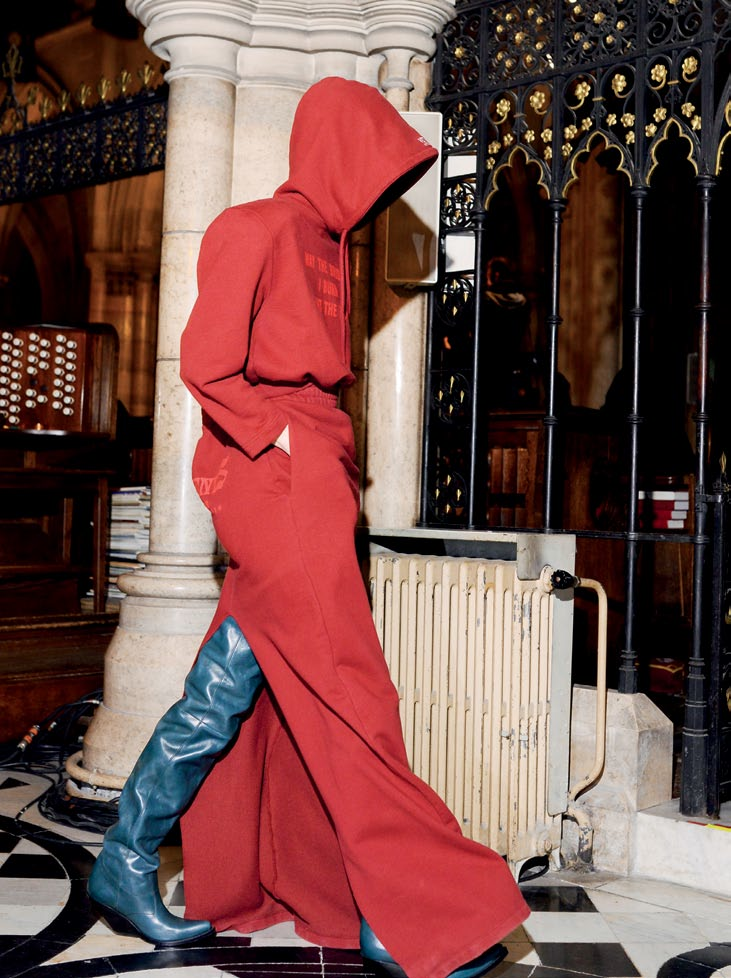This fall/winter, a seismic fashion movement sees Martin Margiela’s cloak of invisibility lifted and stamped on many catwalk shows.


This fall/winter, a seismic fashion movement sees Martin Margiela’s cloak of invisibility lifted and stamped on many catwalk shows.

Martin Margiela is returning to fashion—though not in the manner most would expect him to. Instead, the Belgian designer’s inf luence is sweeping across the fashion capitals like an unstoppable tide, culminating in a fall/winter season where one would be forgiven for thinking that fashion’s most enigmatic man is back in the thick of the action. This pro-Margiela sentiment didn’t happen overnight. In fact, the revolution has been a long time coming. He occupies a rarified spot in fashion; designers like Raf Simons and Haider Ackermann have often spoken of Margiela with reverence. One can also witness traces of his predilection for pushing the boundaries of tailoring and construction all over the runways, whether it’s the second-skin bodysuits at Phoebe Philo’s debut for Céline or the oversized coats at Jacquemus’ most recent fall/ winter showing. Other recent developments have channelled the focus back on Margiela, too. A collaboration with H&M in 2012 saw the “re-edition” of the fashion house’s most iconic pieces. This jolted the public’s sleepy memory of Maison Margiela back to the forefront. “The democracy of our fashion has always been at the centre of our creativity, and the collaboration with H&M allows us to push this instinct further,” the brand said in an official release then. Meanwhile, John Galliano’s appointment as Creative Director at the fashion house—plus his series of well-received haute couture and ready-to-wear collections—gave it a renewed vigour and relevance.

But it was the explosive rise of the Vetements collective that amplified the discussion about Margiela’s legacy the most. Headed by Demna Gvasalia, the ideology behind Vetements involves the study of clothes and their roles in everyday life, then reworking these classic pieces with a daring attitude. Vetements’ re-engineering of garments and silhouettes is often compared with Margiela. Regular clothes are cut and restitched to give them a different lease of life. Margiela’s ethos is firmly grounded in the exploration of clothes made for the now—but built to last a lifetime. Similarly, the ascent of Vetements is largely credited to its ability to capture the zeitgeist of the moment: Functional clothes that bring fashion back to the streets and the celebration of the people who express them through their individual styles. The resurgence of Margiela’s presence on the runways is timely because it signals fashion’s return to its core product: Clothes. More specifically, clothes that “think”— where every stitch, cut and seam is imbued with concept, meaning and purpose. Margiela’s shows, held during the height of his fame and in unexpected or off-the-grid locations in Paris, are now a stoic reminder of a pre-digital era when fashion’s inspirational value wasn’t obscured by the overriding need for immediacy. And during a time when fashion is moving relentlessly forward because of social media, the idea of slowing down to focus on the very essence of what defines a t-shirt or jeans sounds like a beautiful dream tailored for anyone and everyone.

























